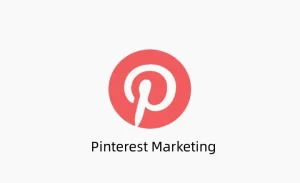Are you looking for an affordable and effective way to reach a wide audience? Look no further than YouTube marketing. With over 2.6 billion monthly active users and 5 billion videos watched daily, YouTube offers one of the largest user bases.
In this blog post, Dolma will explore how you can set up a powerful YouTube marketing strategy to maximize your reach and engagement on the platform.

1. Creating a YouTube Channel
Starting a YouTube channel is an exciting and rewarding journey. To set up your YouTube channel, follow these simple steps:
- Sign in to YouTube: If you already have a Google account, you can use that to sign in to YouTube. If not, create a new Google account by visiting the Google Sign Up page.
- Create a new channel: Once signed in to YouTube, click on the three lines on the top left corner of the screen, then select the “My Channel” option. From there, click on the “Create a Channel” button.
- Choose a channel name and select a category: Give your channel a name that reflects your brand or content, and select a category that best fits your channel’s content. Don’t worry, you can always change these later.
- Add channel description: Make your channel look professional by adding a description that explains your channel’s content and purpose.
- Customize your channel: Take advantage of YouTube’s customization options by adding sections for different types of content, such as playlists or featured channels.
- Start uploading videos: Once your channel is set up, you can begin uploading videos and building your content library.
Remember to use YouTube’s analytics tools to monitor the performance of your videos and improve your content strategy.
2. Defining Your Target Audience on YouTube
Defining your target audience is crucial for creating a successful YouTube marketing strategy. Consider the following factors when defining your target audience:
- Demographics: Age, gender, location, income, education, and occupation can provide valuable insights into who your audience is and what they are interested in.
- Interests: Identify the interests and hobbies of your target audience, such as sports, fashion, or technology, to create content that resonates with them.
- Behavioral patterns: Understand how your target audience behaves online. Do they prefer watching videos on mobile or desktop? What type of videos do they watch, and how often do they watch them?
- Goals and needs: Determine the goals and needs of your target audience. Are they seeking entertainment, information, or inspiration? Are they trying to solve a problem or achieve a specific outcome?
By clearly understanding your target audience, you can tailor your video content, titles, and descriptions to appeal to them and effectively target your ads to reach the right people.
3. Analyzing Competitors
Analyzing your competitors’ YouTube channels can provide valuable insights into what works and what doesn’t in your industry.
Consider the following key aspects when analyzing your competitors:
- Content: Identify the types of content your competitors are creating. Are they focusing on product demos, how-to videos, or a specific genre? Understanding their content can help you identify opportunities for your video content.
- Audience: Analyze your competitors’ audience. Are they reaching the same audience as you or a different one? This information can help you identify opportunities to reach a different or more specific target group.
- Engagement: Examine how your competitors engage with their audience. Do they use calls to action, ask for feedback, or employ other tactics to engage with viewers? Learn from their engagement strategies to improve your own.
- Optimization: Study how your competitors optimize their YouTube channels and videos. Are they effectively using keywords, creating compelling titles and descriptions, and employing other optimization techniques? Use these insights to enhance your optimization efforts.
- Ad campaigns: Explore whether your competitors are running YouTube ads. If so, what types of ads are they using? Understanding their ad strategies can help you identify opportunities for your own YouTube ad campaigns.
- Subscriber count and engagement: Look at the number of subscribers, views, and engagement your competitors are getting. This will give you an idea of their channel’s reach and impact.
By analyzing your competitors’ YouTube channels, you can identify opportunities to improve your strategy and tactics, drive better results for your business, and avoid making the same mistakes.
4. Creating Quality YouTube Video Content
To create high-quality YouTube video content that resonates with your audience, consider the following tips:
- Understand your audience: Research your target audience and create content that appeals to their interests, needs, and preferences.
- Plan your content: Develop a content calendar and plan your YouTube videos to maintain consistency and engage your audience regularly.
- Use high-quality equipment: Invest in a good camera, microphone, and lighting setup to ensure your videos are visually appealing and have good audio quality.
- Be consistent: Release videos on a regular schedule to keep your audience engaged and build anticipation.
- Optimize titles, descriptions, and tags: Incorporate relevant keywords in your video titles, descriptions, and tags to improve search visibility and make it easier for viewers to find your content.
- Engage with your audience: Respond to comments, encourage discussions, and create a sense of community to foster engagement and loyalty among your viewers.
- Use storytelling techniques: Incorporate storytelling elements, such as a clear introduction, rising action, climax, and resolution, to captivate and engage your audience throughout the video.
By implementing these strategies, you can create compelling and valuable video content that stands out on YouTube.
5. Optimizing YouTube Videos
Optimizing your YouTube videos is essential to increase their visibility and reach on the platform. Consider the following tips to optimize your videos:
- Use keywords: Incorporate relevant keywords in your video titles, descriptions, and tags to improve search visibility and rankings.
- Create a clear and concise title: Craft a title that accurately describes the content of your video and captures viewers’ attention.
- Write a detailed and informative description: Provide a comprehensive description of your video that includes relevant keywords and important information about the content.
- Use subtitles: Add subtitles to your videos to make them accessible to a broader audience, including those who are hard of hearing or non-native speakers.
- Choose the appropriate category and privacy settings: Select the most relevant category for your video and adjust the privacy settings accordingly.
- Create eye-catching thumbnails: Design visually appealing thumbnails that entice viewers to click on your video.
- Group videos into playlists: Organize your videos into playlists based on topic or theme to make it easier for viewers to navigate your content.
- Use timestamps: Add timestamps to your video descriptions to help viewers navigate through your video more easily.
By optimizing your videos, you can increase their visibility, attract more viewers, and improve engagement on your YouTube channel.
6. Monitoring Your YouTube Channel
Monitoring your YouTube channel is crucial to understanding how your content is performing and making data-driven decisions. Incorporate social listening into your YouTube strategy to gain valuable insights into your audience, competitors, and industry.
Here’s how social listening can benefit your YouTube marketing efforts:
- Monitor brand mentions: Track conversations and mentions of your brand, product, or industry on social media platforms to stay informed about what people are saying.
- Identify trends and topics: Stay ahead of the curve by discovering emerging trends and topics in your industry. Create resonating content for your audience.
- Understand your audience: Gain insights into your audience’s preferences, interests, and needs to create more effective content that drives engagement and conversions.
- Monitor competitors: Monitor competitors’ YouTube channels for strategies, learning from their successes and failures to stay competitive.
- Identify YouTube channel sentiment: Analyze the sentiment behind conversations about your YouTube channel to understand how viewers perceive your content and make improvements accordingly.
- Identify influencers and brand advocates: Discover influential users and brand advocates who can help amplify your YouTube marketing efforts and increase your reach.
- Respond to comments and feedback: Engage with your audience by responding to comments and feedback, fostering a sense of community and loyalty.
By leveraging social listening tools and strategies, you can gain valuable insights that will inform your content creation, engagement tactics, and overall YouTube marketing strategy.
7. Exploring YouTube Shorts
YouTube Shorts is a feature that allows users to create short videos using their mobile devices. By creating and sharing Shorts, you can expand your reach on YouTube and beyond.
Here’s how YouTube Shorts can benefit your YouTube marketing strategy:
- Increased visibility: Shorts provides editing tools like music and speed controls to help you create captivating short-form content.
- Shareability: Shorts can be shared on other social media platforms, helping you extend your reach and attract new viewers.
- Creative opportunities: Shorts provides editing tools like music and speed controls to help you create captivating short-form content.
- Brand exposure: Utilize Shorts to showcase your brand’s personality, products, or services in a concise and captivating way.
Incorporate YouTube Shorts into your YouTube marketing strategy to leverage its unique features and expand your reach.
8. Collaborating with YouTube Influencers
Collaborating with YouTube influencers can be a powerful way to amplify your YouTube marketing strategy. By partnering with influencers, you can tap into their established audience and leverage their influence.
Consider the following collaboration opportunities:
- Product Placement: Provide your product to an influencer and ask them to use or feature it in their videos.
- Sponsored Videos: Pay an influencer to create a video that promotes your product or service.
- Giveaways: Collaborate with influencers to run giveaways on their channel, offering your product as a prize to their followers.
- Affiliate Marketing: Offer influencers a commission for every sale generated through their referral link.
- Brand Ambassadorship: Hire an influencer to be the face of your brand, representing and promoting your products or services.
To find YouTube influencers who align with your brand values and target audience, utilize social listening tools that can help identify relevant influencers and their impact on the platform.
9. Harnessing the Power of YouTube Ads
YouTube ads can be a game-changer for your YouTube marketing strategy, enabling you to increase visibility, reach, and engagement.
Here’s how you can leverage YouTube ads effectively:
- Targeted advertising: Use YouTube’s targeting options to reach specific demographics, interests, and behaviors for effective ad placement.
- Combining marketing strategies: Integrate YouTube advertising with other marketing tactics, such as influencer marketing and social media campaigns, to amplify your message and increase your content’s reach.
- Driving traffic: Video ads can drive traffic and potential conversions by directing viewers to your website or social media channels.
- Measurable results: Utilize YouTube analytics to track the performance of your ads, measure their impact, and make data-driven adjustments to optimize your ad campaigns.
By incorporating YouTube ads into your marketing strategy, you can extend your reach, engage with a broader audience, and achieve your marketing goals.
10. Tracking YouTube Analytics
YouTube analytics provides valuable insights into how your content performs and how your audience engages with it. Leverage these insights to improve the effectiveness of your YouTube marketing efforts.
Here’s what you can learn from YouTube analytics:
- Audience insights: Understand the demographics of your audience, such as age, gender, location, and interests, to create content that resonates with them and target your marketing efforts effectively.
- Measuring video performance: Track metrics like views, likes, comments, and other engagement metrics to identify which videos are performing well and which need improvement.
- Optimizing content strategy: Analyze metrics like watch time and retention to understand what content engages viewers and keeps them on your channel. Use this information to optimize your content strategy and improve engagement and retention.
- Evaluating marketing campaigns: Measure the performance of different marketing campaigns, such as end screens and annotations, to understand their effectiveness and adjust your strategy accordingly.
- Identifying trends and patterns: Identify patterns and trends in your audience’s behavior, such as peak activity times, to optimize your content release schedule and engagement tactics.
By leveraging YouTube analytics, you can make informed decisions, optimize your YouTube marketing strategy, and achieve better results.
Why Brands Should Invest in YouTube Marketing
Brands should invest in YouTube marketing for several reasons:
- Reach: With over 2.6 billion monthly active users, YouTube provides a massive audience for brands to reach. It allows brands to connect with their target audience in a way that traditional marketing methods cannot.
- Engagement: Video is a highly engaging medium, and people spend a significant amount of time watching videos on YouTube. Brands can capture their audience’s attention and keep them engaged for longer periods.
- Searchability: YouTube is the second largest search engine globally, and Google indexes videos. Videos help brands appear in search results and reach people actively seeking related content.
- Brand building: Video marketing helps brands showcase their products, services, and brand personality in a visually appealing and memorable way. This increases brand awareness and builds trust with their audience.
- Measurable results: YouTube offers comprehensive analytics for brands to track video performance, understand audience engagement, and make data-driven decisions to improve their strategy.
- Cost-effective: Creating and uploading video content to YouTube is relatively inexpensive compared to traditional media channels.
- Multipurpose platform: YouTube serves various purposes, including education, entertainment, and inspiration. Brands can leverage its versatility to connect with their audience in meaningful ways.
By investing in YouTube marketing, brands can maximize their reach, increase engagement, build their brand, and drive measurable results.
Conclusion
Creating a successful YouTube marketing strategy requires careful planning, optimization, and continuous monitoring.
By following the steps outlined in this comprehensive guide, you can set up a powerful YouTube channel, understand your target audience, analyze your competitors, create high-quality content, optimize your videos, monitor your channel, leverage YouTube Shorts and influencer collaborations, utilize YouTube ads, track YouTube analytics, and ultimately achieve your marketing goals.
YouTube offers immense opportunities for brands to expand their reach, engage their audience, and build a strong presence. So, embrace the power of YouTube marketing and unlock its full potential for your brand’s success.
Posts that may interest you:


